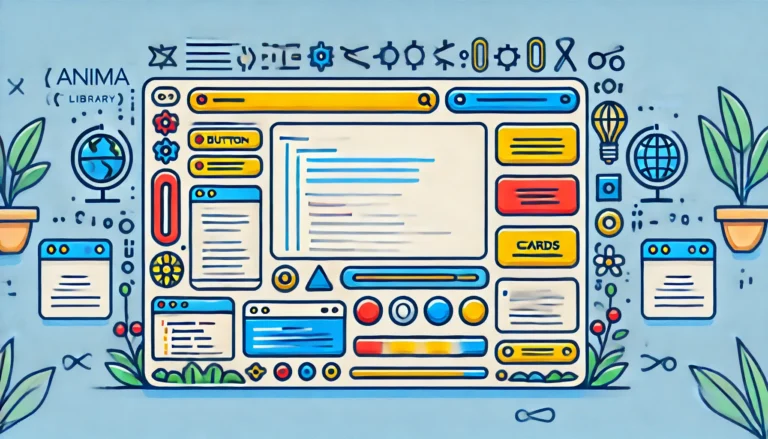What is a monorepo? A practical guide for developers5 min read
Reading Time: 4 minutesKeeping projects streamlined and in sync is a constant goal (and struggle). With multiple teams and services working together, managing code and dependencies can become complex. To tackle this, many teams have turned to a monorepo setup. But what exactly is a monorepo, and why are companies like Google and Facebook using it?
In this article, we’ll dive into what a monorepo is, how it compares to other setups, and the pros and cons of going monorepo. Whether you’re part of a large team or just curious about different code management strategies, this guide will give you a good idea of what a monorepo can bring to the table.
What is a monorepo?
A monorepo—short for “monolithic repository”—is a single repository that houses the code for multiple projects within an organization. Unlike a multi-repo approach, where each project has its own repository, a monorepo keeps everything in one place.
For example, if you work on a web app with a backend service, frontend app, and some shared libraries, a monorepo would house all of these projects in one central place. This setup makes it easier to share code, manage dependencies, and maintain consistency across projects, which is especially helpful for big teams.
Key features of a monorepo:
- Single Repository: All projects are stored together in a single version-controlled repository.
- Shared Code and Dependencies: Easily share code and dependencies between projects.
- Unified Versioning: Everything is versioned together, meaning each “snapshot” of the codebase is consistent.
- Consistent Build and Deployment Pipelines: Centralized tooling makes it easier to standardize how code gets built and deployed.
Why consider a monorepo?
Monorepos have become popular because they bring a lot of practical benefits, especially for teams working on complex systems or for organizations with lots of interdependent projects. Let’s look at some of the big advantages:
Simplified dependency management
With everything in one place, it’s easier to manage dependencies. Shared libraries, for instance, can be updated in one spot and used across multiple projects without complicated dependency juggling.
Code reusability and consistency
A monorepo makes it easy to reuse components, libraries, and modules across projects, so you don’t end up reinventing the wheel. This reusability also fosters consistency, reducing the chance of bugs due to mismatched code or dependencies.
Better collaboration and transparency
When all code is in one place, developers can more easily see what other teams are working on. This setup improves collaboration and can break down silos, making it easier to share ideas and align on goals.
Unified versioning and atomic changes
With a monorepo, everything is versioned together, so you avoid situations where one team is working with an outdated version of a shared component. It’s also easier to make changes across multiple projects at once—a single commit can update several projects, making updates and bug fixes much simpler.
Streamlined CI/CD pipelines
Monorepos allow you to set up a single CI/CD (Continuous Integration/Continuous Deployment) pipeline that works across all projects, simplifying builds, tests, and deployments. A well-configured pipeline can detect which parts of the codebase changed and only run tests for those areas, saving time and resources.
Monorepo vs. multi-repo: what’s the difference?
In a monorepo setup, all code is in a single place, while with a multi-repo setup, each project has its own repository. Here’s a quick look at the differences:
| Monorepo | Multi-Repo |
|---|---|
| Single repository for all projects | Separate repository for each project |
| Easier to share code and dependencies | Dependencies are managed separately |
| Unified versioning | Independent versioning |
| Atomic changes across projects | Coordination required for cross-project updates |
| Centralized CI/CD | Separate CI/CD for each repo |
Challenges of using a monorepo
Monorepos aren’t perfect and come with their own set of challenges. Here’s what you should keep in mind:
Scalability and performance
As monorepos grow, they can become difficult to manage. Large codebases can lead to slower performance, so it’s important to use tools that can handle a big repository and help maintain its organization.
Complex CI/CD requirements
Monorepos require more advanced CI/CD configurations. Without the right setup, you could end up re-running tests and builds unnecessarily, which eats up resources. Advanced tools like Bazel, Nx, and Lerna are often used to help manage these complexities.
Tool compatibility
Not all development tools are built for monorepos. Teams might need to invest in new tools or custom scripts to support specific needs, like selective builds or dependency management.
Learning curve for developers
Switching to a monorepo requires some training. Developers need to understand how to work within a shared environment and follow best practices to keep the monorepo organized.
Getting started with a monorepo
Thinking of trying out a monorepo? Here are some tips to make the transition smoother:
- Plan Your Structure: Organize projects within the repo in a way that makes sense and keeps things clean.
- Pick the Right Tools: For larger monorepos, tools like Bazel, Nx, or Lerna can help keep builds and tests fast and efficient.
- Optimize CI/CD: Set up selective builds and tests so your pipeline only processes the parts of the code that have changed.
- Document Best Practices: Make sure developers know the do’s and don’ts for working in a monorepo to avoid clutter and confusion.
Companies using monorepos
Some of the biggest tech companies are using monorepos:
- Google: Google uses a massive monorepo to store code for nearly all its products, using a custom version control system called Piper.
- Facebook: Facebook manages its backend and frontend code in a monorepo, which helps its teams deploy updates quickly across different services.
- Microsoft: Microsoft uses a monorepo structure for large codebases like Windows and Office to improve collaboration and consistency.
A monorepo is a powerful way to organize code, especially when multiple teams work on related projects. It makes it easier to share code, manage dependencies, and keep projects aligned. But to make the most of a monorepo, you’ll need solid tools and good practices to handle growth and complexity.
Happy coding!


 Figma
Figma Adobe XD
Adobe XD Blog
Blog


